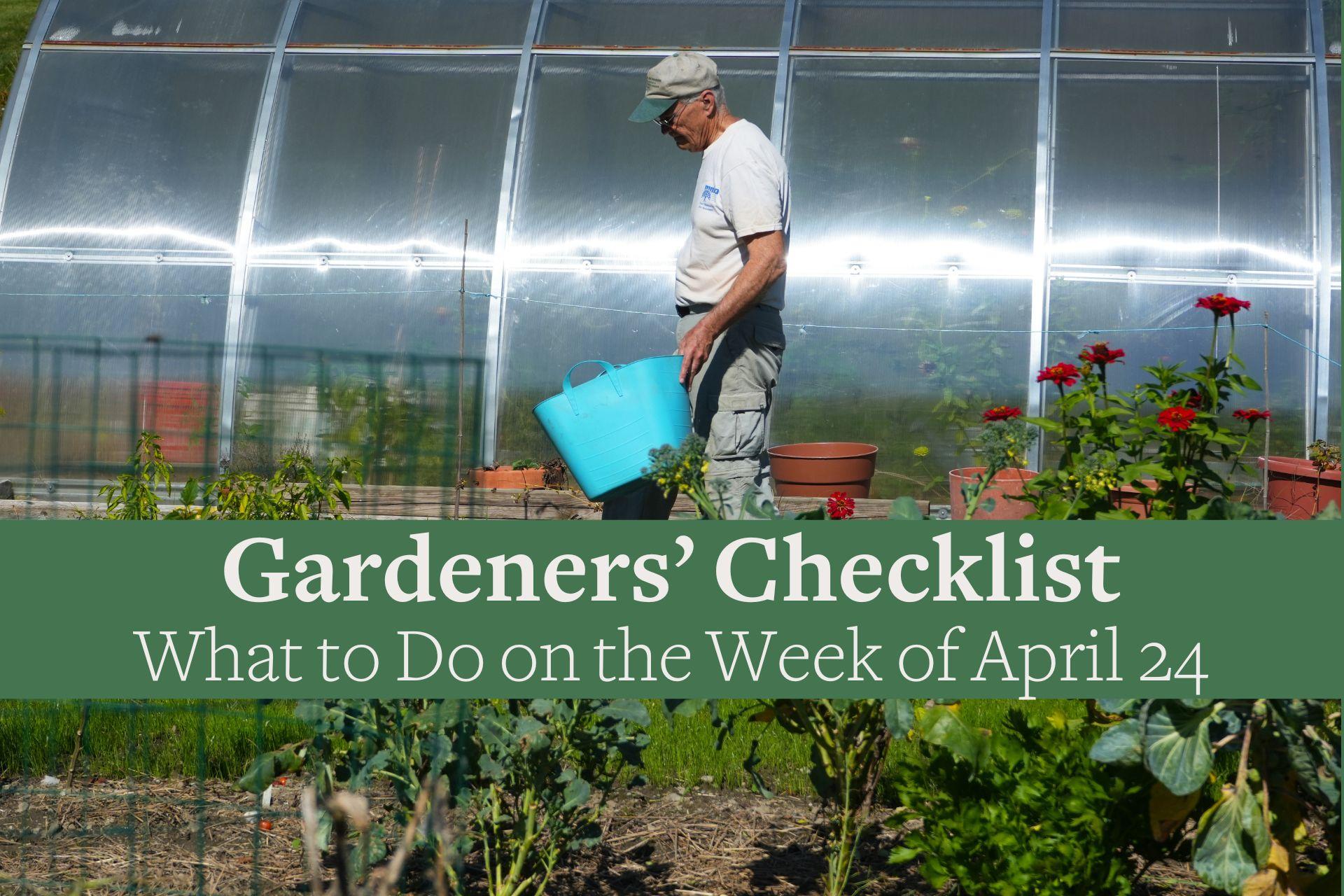You are here
Gardener's Checklist: Here Is What to Do On The Week of April 24
Gardener's Checklist: Here Is What to Do On The Week of April 24
By Ron Kujawski
* Dig up horseradish roots if you didn’t make that part of your Easter or Passover ritual. Horseradish is best dug before new growth begins. Newly dug roots can be washed, peeled, and grated to make horseradish sauce which will keep in the fridge for several weeks. However, washed but unpeeled roots can be stored in perforated plastic bags in the fridge for three to six months. That allows you to grate a few roots now and then as needed.
* Start seedlings of squash, melons, and cucumbers indoors. I sow the seeds in degradable peat or cow pots so that there will be no disturbance of the roots when the seedlings are transplanted to the garden in early June.
* Celebrate Arbor Day this Friday by planting a tree. “For in the true nature of things, if we rightly consider, every green tree is far more glorious than if it were made of gold and silver.” (Martin Luther)
* Divide the crowns of rhubarb plants that have become crowded. Incorporate lots of rotted manure or compost into soil when replanting divisions. Rhubarb plants yield best when provided with plentiful moisture throughout the season. The leaves of plants are quite attractive, so consider placing some plants in an edible landscape, or in a traditional English cottage garden.
* Change the engine oil, wash or replace the air filter, and sharpen the mower blades before roaring out to mow the south forty. Ooops! It may help to gas up the mower first. Use fresh fuel, not the stuff that sat in the gas can all winter. Yes, that last tip is a note to me.
* Take advantage of the still-moist soil to edge flower beds and other gardens. Once soils are dry, this task is more difficult. Edging is a simple task that makes gardens look neat.
*
Attention! Here’s the dress code for working outdoors: light-colored long pants, long-sleeved shirts, tightly knitted socks, and a wide-brimmed hat. Tuck the shirt into your pants, tuck the pants into your socks, and tuck your head into the hat. Yes, this will qualify you for Mr. Blackwell’s Worst Dressed List. On the other hand, it could save you a lot of misery by protecting you from deer ticks and the various diseases they carry. For additional protection, spray your boots and clothing, including your hat and gloves with permethrin tick insecticide or an insect repellent containing DEET. Apply the permethrin before putting on your clothing to avoid inhaling the product — you may have to do this outdoors, preferably behind a bush — or having it come in contact with your skin. DEET can be applied to clothing or skin (Follow label instructions). Use a repellent with less than 10% DEET when applying to children. You may be getting tired of these warnings and precautions about deer ticks, but if you don’t think it is serious just ask someone who has had Lyme disease or ehrlichiosis.
Ron Kujawski began gardening at an early age on his family's onion farm in upstate New York. Although now retired, he spent most of his career teaching at the UMass Extension Service. He serves on Berkshire Botanical Garden’s Horticulture Advisory Committee. His book, Week-by-Week Vegetable Gardener’s Handbook, is available here.
Help Our Garden Grow!
Your donation helps us to educate and inspire visitors of all ages on the art and science of gardening and the preservation of our environment.
All donations are 100 percent tax deductible.



